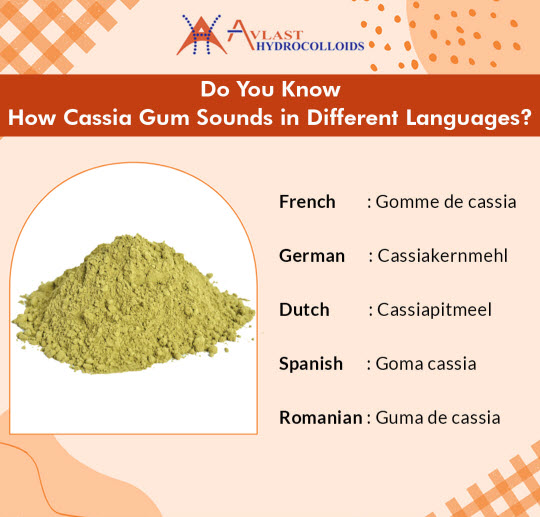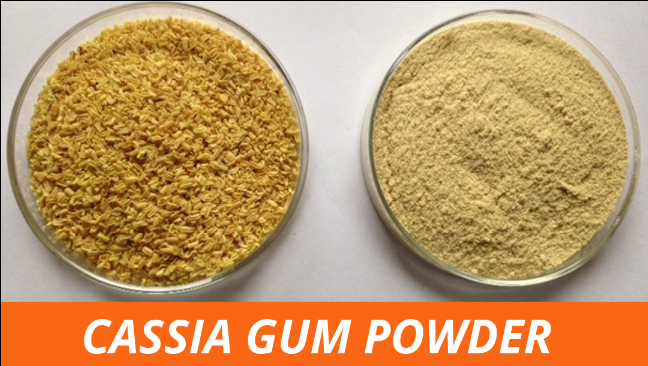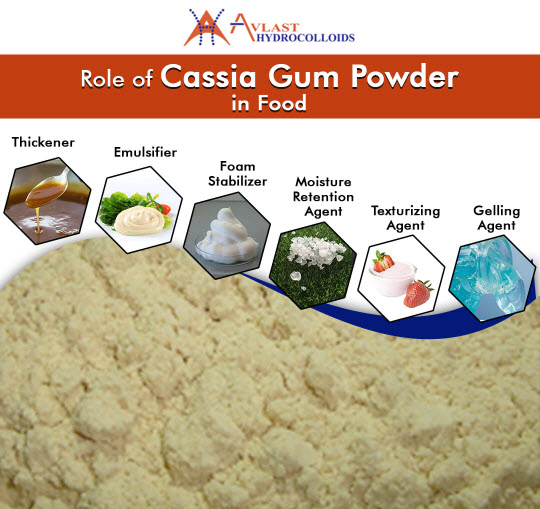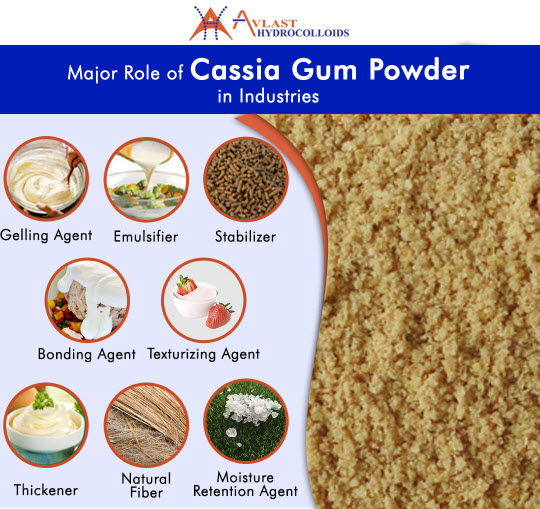The Global Impact and Multilingual Understanding of Cassia Gum: Applications and Benefits Across Industries
Cassia Gum, derived from the seeds of the Cassia tora plant, is a versatile natural gum used in various industries, including food, pharmaceuticals, and cosmetics. Known for its thickening, gelling, and stabilizing properties, Cassia Gum is a valuable additive in many products. As global trade and communication expand, understanding the translation of “Cassia Gum” in different languages becomes essential for international business and cultural exchange. This article explores the translation of Cassia Gum in various languages and its applications and significance in different regions.
Catalan: Goma cassia
In Catalan, “Cassia Gum” is translated as “Goma cassia.” Catalan is spoken in Catalonia, Valencia, the Balearic Islands, and the eastern part of Aragon in Spain. It is also spoken in the city of Alghero in Sardinia, Italy. The region’s cuisine, heavily influenced by Mediterranean flavors, can benefit from the use of Goma cassia in food products like sauces and desserts, where its thickening and stabilizing properties enhance texture and consistency.
Croatian: Cassia guma
In Croatian, “Cassia Gum” is known as “Cassia guma.” Croatian is the official language of Croatia and is also spoken in parts of Bosnia and Herzegovina, Serbia, Montenegro, and neighboring countries. The use of Cassia guma in traditional Croatian cuisine, such as in the preparation of sweets and pastries, highlights its versatility. Additionally, the cosmetic industry in Croatia can utilize Cassia guma for its stabilizing properties in products like lotions and creams.
Danish: Cassiagummi
In Danish, “Cassia Gum” translates to “Cassiagummi.” Danish is the official language of Denmark and is also spoken in Greenland and the Faroe Islands. Cassiagummi is valuable in Danish food processing, particularly in dairy products like yogurts and cheeses, where it helps maintain texture and prevent separation. The pharmaceutical industry in Denmark also benefits from Cassiagummi as an excipient in drug formulations.
Dutch: Cassiapitmeel
In Dutch, “Cassia Gum” is referred to as “Cassiapitmeel.” Dutch is spoken in the Netherlands, Belgium, Suriname, and parts of the Caribbean. The use of Cassiapitmeel in Dutch cuisine, especially in baking and confectionery, enhances the quality of products by improving texture and stability. The cosmetic industry in the Netherlands also leverages Cassiapitmeel for its gelling properties in various skincare products.
Finnish: Cassiakumi
In Finnish, “Cassia Gum” is translated as “Cassiakumi.” Finnish is the official language of Finland and is also spoken by Finnish communities in Sweden, Norway, and Russia. Cassiakumi finds applications in Finnish food products, such as soups and sauces, where it acts as a thickening agent. In the pharmaceutical sector, Cassiakumi is used in the formulation of tablets and capsules for its binding properties.
French: Gomme de cassia
In French, “Cassia Gum” is known as “Gomme de cassia.” French is spoken in France, Canada, Belgium, Switzerland, and many African countries. Gomme de cassia is widely used in French cuisine, particularly in desserts like mousses and pastries, where it provides the desired consistency and texture. The cosmetic industry in France also utilizes Gomme de cassia in products like gels and creams for its stabilizing properties.
German: Cassiakernmehl
In German, “Cassia Gum” translates to “Cassiakernmehl.” German is spoken in Germany, Austria, Switzerland, and parts of Belgium and Luxembourg. Cassiakernmehl is used in German food processing, especially in the production of meat products like sausages, where it acts as a binder and thickener. The pharmaceutical industry in Germany also benefits from Cassiakernmehl as an excipient in various drug formulations.

Polish: Gumy cassia
In Polish, “Cassia Gum” is referred to as “Gumy cassia.” Polish is the official language of Poland and is also spoken by Polish communities worldwide. Gumy cassia is used in Polish cuisine, particularly in traditional dishes and desserts, to enhance texture and consistency. The cosmetic industry in Poland leverages Gumy cassia for its gelling and stabilizing properties in skincare and haircare products.
Portuguese: Goma de cassia
In Portuguese, “Cassia Gum” translates to “Goma de cassia.” Portuguese is spoken in Portugal, Brazil, and several African countries. Goma de cassia is widely used in Portuguese and Brazilian cuisine, particularly in sauces, soups, and desserts, where it acts as a thickening agent. The pharmaceutical industry in these regions also utilizes Goma de cassia for its binding properties in tablets and capsules.
Romanian: Guma de cassia
In Romanian, “Cassia Gum” is known as “Guma de cassia.” Romanian is the official language of Romania and Moldova. Guma de cassia is used in Romanian cuisine to improve the texture of traditional dishes and desserts. The cosmetic industry in Romania also benefits from Guma de cassia for its stabilizing properties in skincare and haircare products.
Slovenian: Guma cassia
In Slovenian, “Cassia Gum” is translated as “Guma cassia.” Slovenian is the official language of Slovenia and is also spoken by Slovenian communities in neighboring countries. Guma cassia is used in Slovenian cuisine, particularly in traditional recipes, to enhance texture and stability. The pharmaceutical industry in Slovenia leverages Guma cassia for its binding properties in drug formulations.

Spanish: Goma cassia
In Spanish, “Cassia Gum” is known as “Goma cassia.” Spanish is spoken in Spain, Latin America, and parts of the United States. Goma cassia is widely used in Spanish and Latin American cuisine, particularly in sauces, soups, and desserts, where it acts as a thickening agent. The cosmetic industry in these regions also utilizes Goma cassia for its stabilizing properties in skincare and haircare products.
Applications and Benefits of Cassia Gum
Cassia Gum has numerous applications across various industries due to its unique properties. Its ability to act as a thickening, gelling, and stabilizing agent makes it an essential ingredient in many products.
Food Industry
In the food industry, Cassia Gum is used as a thickening agent in a wide range of products, including sauces, soups, and desserts. Its gelling properties make it an ideal additive for jelly and confectionery products. Additionally, Cassia Gum is used as a stabilizer in dairy products like yogurts and cheeses, preventing separation and maintaining consistency.
Dairy Products: Cassia Gum helps improve the texture and shelf life of dairy products by preventing the formation of ice crystals and maintaining a smooth consistency. It is commonly used in products like ice creams, yogurts, and cheeses.
Bakery and Confectionery: In bakery and confectionery products, Cassia Gum acts as a thickening and gelling agent, enhancing the texture and stability of the final product. It is used in items like pastries, cakes, and jelly products.
Sauces and Soups: Cassia Gum is used in sauces and soups to provide the desired thickness and consistency. It helps to stabilize the emulsion and prevent separation, ensuring a smooth texture.

Pharmaceutical Industry
In the pharmaceutical industry, Cassia Gum is used as an excipient in drug formulations. Its binding properties make it an ideal ingredient for tablets and capsules, ensuring that the active ingredients are evenly distributed and the final product is stable.
Tablets and Capsules: Cassia Gum is used as a binder in tablets and capsules, helping to hold the ingredients together and maintain the desired shape. It also aids in the controlled release of active ingredients.
Suspensions and Emulsions: In pharmaceutical suspensions and emulsions, Cassia Gum acts as a stabilizer, preventing the separation of ingredients and ensuring a uniform distribution of the active components.

Cosmetic Industry
The cosmetic industry utilizes Cassia Gum for its gelling and stabilizing properties. It is used in a wide range of skincare and haircare products, including lotions, creams, and gels.
Skincare Products: Cassia Gum is used in skincare products to provide a smooth and consistent texture. It helps to stabilize emulsions and prevent separation, ensuring that the product remains effective and easy to apply.
Haircare Products: In haircare products, Cassia Gum acts as a thickening agent, providing the desired consistency and improving the overall performance of the product. It is commonly used in shampoos, conditioners, and styling gels.

Environmental and Sustainable Aspects
Cassia Gum is derived from the seeds of the Cassia tora plant, which grows in subtropical regions. The plant is resilient and can grow in less fertile soils, making it a sustainable crop that does not require extensive agricultural inputs.
Sustainable Cultivation: The cultivation of Cassia tora does not require large amounts of water or fertilizers, making it an environmentally friendly crop. Its ability to grow in wild, uncultivated areas reduces the need for deforestation and land conversion.
Soil Health: Cassia tora plants contribute to soil health by preventing soil erosion and promoting soil fertility. The deep root systems of the plants help to stabilize the soil, while the organic matter from fallen leaves and pods adds nutrients to the soil.
Biodiversity: The cultivation of Cassia tora supports biodiversity by providing habitat and food for various wildlife species. The plant’s flowers attract pollinators, while the seeds serve as a food source for birds and other animals.
Conclusion
Understanding the translation of “Cassia Gum” in different languages is crucial for global business and cultural exchange. This versatile natural gum, known for its thickening, gelling, and stabilizing properties, finds extensive applications across the food, pharmaceutical, and cosmetic industries. By recognizing its various translations and cultural significances, businesses can better navigate international markets, ensuring product compatibility and consumer acceptance. Furthermore, the sustainable cultivation of Cassia tora contributes to environmental health, making Cassia Gum not only a valuable industrial ingredient but also an eco-friendly choice. As global trade continues to expand, fostering a deeper understanding of Cassia Gum in diverse linguistic and cultural contexts will enhance its utilization and promote its benefits worldwide.

